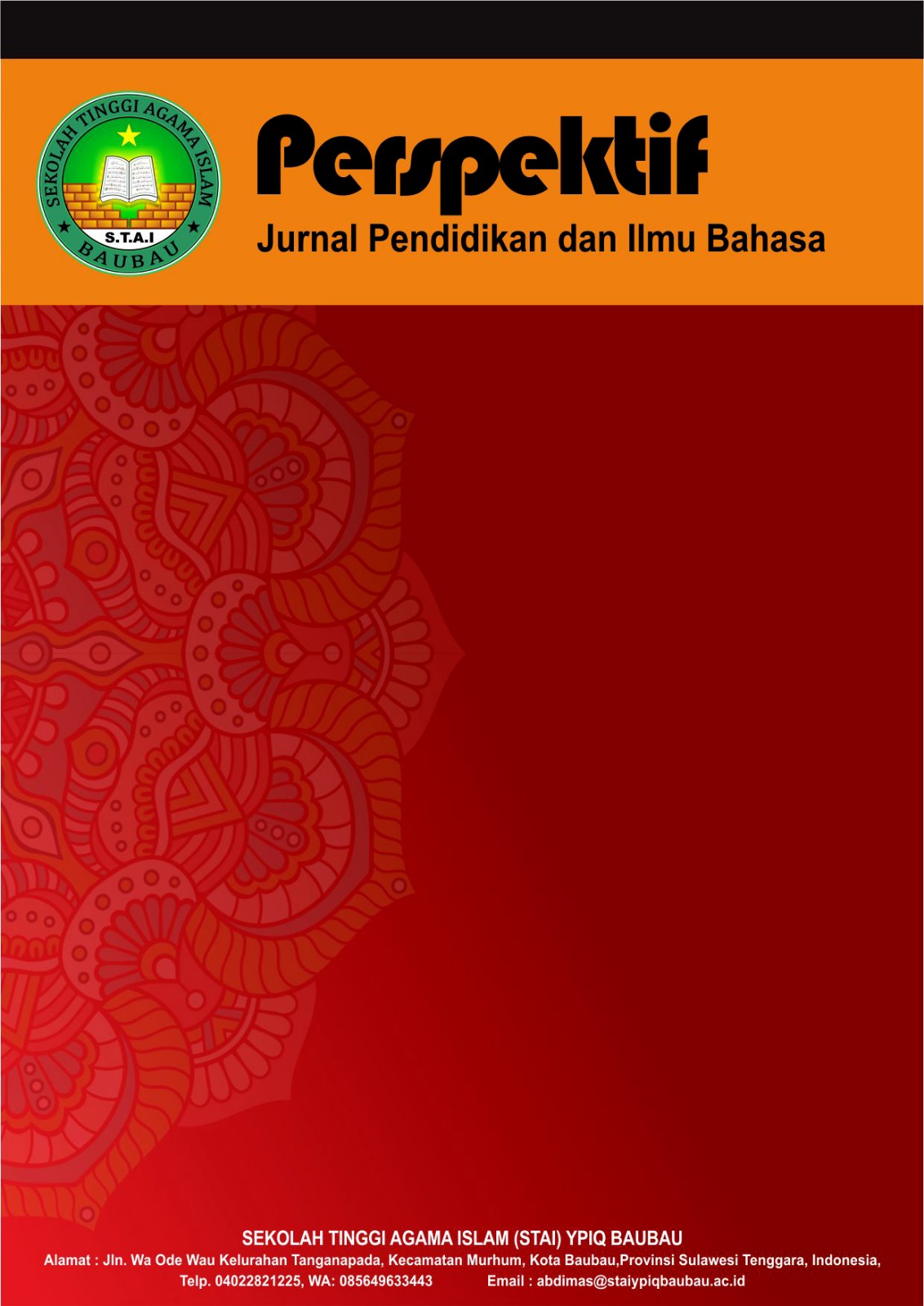فعالية وسائط الباوربوينت (powerpoint) المعتمدة على تقنيّة التقليد الحركي في تعزيز مفردات اللغة العربية لدى طلاب المدرسة المتوسطة الحكومية الأولى في تولونغاغونغ
DOI:
https://doi.org/10.59059/perspektif.v3i1.2072Keywords:
Mimicry Memorization, PowerPoint, VocabularyAbstract
This research investigates how effective the use of instructional media based on PowerPoint (PPT), when integrated with mime techniques, is in improving students' mastery of vocabulary. The study is driven by the recurring problem of students having a limited range of vocabulary, which frequently becomes an obstacle in the process of acquiring language skills. A quantitative research method with a quasi-experimental framework was employed, involving two separate groups of participants: an experimental class exposed to mime-supported PPT instruction, and a control class taught using traditional methods without the aid of visual media. To measure learning outcomes, both pre-tests and post-tests were administered, and the data obtained were examined using an independent sample t-test. The experimental group was taught using the تقنيّة التقليد الحركي technique enhanced by multimedia presentation, while the control group relied solely on conventional instruction. The analysis indicated a notable he findings revealed a notable enhancement in the vocabulary skills of the experimental group, demonstrated by an increase in their average post-test scores. Scores increasing from 47.59 to 77.59. In contrast, the control group showed a more moderate gain, from 48.33 to 63.67. These results underscore the value of integrating PowerPoint into the تقنيّة التقليد الحركي approach, which appears to significantly reinforce vocabulary retention and engagement. Consequently, this study advocates for more creative and interactive strategies in Arabic language instruction, especially in addressing persistent vocabulary learning challenges.
References
Andarista, L., & Semarang, U. N. (2024). EFEKTIVITAS MEDIA POWER POINT PADA KETERAMPILAN MENYIMAK BAHASA ARAB KELAS VII DI MTs N 2 KUDUS. 13(1), 92–100.
Arikunto, S. (2021). Prosedur Penelitian: Suatu Pendekatan Praktik. Rineka Cipta.
Arsyad. (2013). Pembelajaran Bahasa Arab.
Cresswell, J. W. (2023). Penelitian Kualitatif & Desain Riset.
Fajar, B. A., & Mayar, F. (2023). Interactive Powerpoint Media in Grade IV Elementary School. Journal of Education Research and Evaluation, 7(3), 391–398. https://doi.org/10.23887/jere.v7i3.66424
Hafsari, S., Wahyudin, D., Atiatulwafiroh, S., Budiyanto, C., & Wiwaha, R. S. (2024). Mimicry-Memorization Method: Elevating Arabic Speaking Skills With Visual Media. Kalamuna Jurnal Pendidikan Bahasa Arab Dan Kebahasaaraban, 5(1), 1–20. https://doi.org/10.52593/klm.05.1.01
Hilman, I., Febrianti, A., & Aulia, N. (2003). Penggunaan Media Pembelajaran Audio Visual Guna Meningkatkan Hasil Belajar Siswa Pada Mata Pelajaran IPS di Sekolah Dasar. 152–157.
Maskor, Z. M., Baharudin, H., Lubis, M. A., & Yusuf, N. K. (2016). Teaching and Learning Arabic Vocabulary : From a Teacher ’ s Experiences. March, 482–490.
Mayer. (2001). Multimedia learning. Cambridge University Press.
Nurhayani, N., & Eliza, D. (2022). Upaya Pengembangan Kosakata Dengan Metode Dialog Iman Asma’ul Husna Di Kuttab Al Huffazh Payakumbuh. Jurnal Basicedu, 6(3), 4638–4652. https://doi.org/10.31004/basicedu.v6i3.2825
Paramita, N. P., & Setiawan, A. (2023). Android-Based Al- ’ Arabiya Application Using Powerpoint Ispring Presenter as an Innovation in Arabic Language Learning Media Aplikasi Al- „ Arabiya Berbasis Android Menggunaka n Powerpoint Ispring Presenter Sebagai Inovasi Media Pembelajaran Bahasa Arab. 7(2), 185–210.
Sari, D. W., & Filayani, M. I. (2023). Interactive Powerpoint Nervous System Material: A Learning Media Development Research. Bioeduca Journal of Biology Education, 5(2), 21–34. https://doi.org/10.21580/bioeduca.v5i2.16403
Siregar, S. (2019). Statistik Parametrik untuk Penelitian Kuantitatif. Bumi Aksara.
Siregar, S. M., & Akrim, A. (2024). Implementasi Metode Mimicry Memorization Pada Pembelajaran Bahasa Arab Di Madrasah Tsanawiyah Pondok Pesantren Modern Al-Hasyimiyah Darul Ulum Sipaho. Eduinovasi Journal of Basic Educational Studies, 4(1), 836–848. https://doi.org/10.47467/edui.v4i1.6268
Sugiyono. (2017). Metode Penelitian Kuantitatif, Kualitatif, dan R&D. Alfabeta.
Tarigan, H. G. (2011). Pengajaran Kosakata (Revisi). Angkasa. https://books.google.co.id/books/about/Pengajaran_kosakata.html?id=RLUtAAAAMAAJ&redir_esc=y
Yusoff, N. M. R. N., & Ghani, K. A. (2012). Penggunaan Alat Bantu Mengajar Dan Hubungannya Dengan Pencapaian Kemahiran Mendengar Bahasa Arab. Jurnal Teknologi. https://doi.org/10.11113/jt.v49.215
Downloads
Published
How to Cite
Issue
Section
License
Copyright (c) 2025 Perspektif : Jurnal Pendidikan dan Ilmu Bahasa

This work is licensed under a Creative Commons Attribution-ShareAlike 4.0 International License.








